
Wetland is a type of land form subjected to excessive wetness to the extent that the wet condition influences the possible land use. It is a natural ecological environment that has free water on the surface for more than two months which can be used to grow crops at dry or off season. They are found on every continent except Antarctica.
Wetland soils are soils that are ponded or water saturated through out the year or for varying periods of time during the year, including during the growing season. Thus, the soils are seasonally flooded. Such soils can support the production of crops at off season.
Wetland soils as described by the United States fish and wildlife services (USFWS) as a land whose water table is at or near or above the land surface long enough to promote the formation of hydric soils or to support the growth of hydrophytes.
Most Wetland soils have poorly drained profile that are dominated by mottling dark grey colour of peaty accumulation. They are grouped with alluvial soils on the basis that both occur on flat or low lying sites and many alluvial soils are also hydromorphic. Wetland soils may be mineral or organic. They are extremely variable. They range from soft, semi liquid, massive and structureless or laminated in perennially submerged condition to consolidated form with a block or prismatic structure. For example, in seasonally dry environment, texture range from clay to Sands. It’s soil profile ranges from undeveloped to strongly developed.
Due to the fact that Wetland soils are water saturated (hydrology), they determine how the soil develops and the types of plant and animal communities living in and on the soil. Wetlands may support both aquatic and terrestrial species. The prolonged presence of water creates conditions that favor the growth of specially adapted plants (hydrophytes) like rice and promote the development of characteristic wetland (hydric) soils.
Certain factors are considered before calling an area a wetland. The area must have:
1. hydrology that results in wet or flooded soils
2.soils that are dominated by anaerobic processes, and
3. biota, particularly rooted vascular plants, that are adapted to life in flooded, anaerobic environments.
Wetlands take many forms including rivers, marshes, bogs, mangroves, mudflats, ponds, swamps, billabongs, lagoons, lakes, and floodplains.
WETLAND FORMATION
Two environmental factors influence the formation of Wetlands. One is the climate and second is the soil.
a. CLIMATE
Both climate patterns and limitations of landforms influence wetland formation. In the case of climatic patterns, there must be a net balance between precipitation and evaporation which determines the quantity and timing of water available for the formation and maintenance of wetland. Heavy precipitation with very low evaporation will result in water pool formation at depressed areas. Heavy precipitation at hilly areas and the geomorphology of the landscape determines water gathering downhill at the valley bottom or depressions. The water gathered at these two locations, are prevented from draining away by the land topography or the soil subsurface layers. Thus, water ponding up on top of the soil at these locations. Each wetland has a water signature, or hydroperiod (the number of days per year that an area of land is wet or the length of time that there is standing water at a location), which is characterized by the timing, duration, and quantity of water in the system.
This inundation (flooding) at the depressed areas has biological consequences. It saturated the soil pores, preventing atmospheric oxygen and air from filling the soil pores (creating anaerobic condition). Therefore, making only organisms that can survive or adapt to low-oxygen or anoxic (negligible oxygen) conditions to habitat the wetland environments.
b. SOIL
For any area to be classified as a wetland, the presence of water must contribute to the formation of hydric soils, which are formed under flooded or saturated conditions persisting long enough for the development of anaerobic (oxygen-depleted) conditions during the growing season. The anaerobic layers of the soil ranges from the upper layer of the soil, deep down to the root zone and beyond. Such soils can be organic (containing organic compounds) or derived from minerals.
Organic wetland soils (hydric soils), such as peatland soils, contain at least 12 percent organic matter and are typically acidic, with characteristic colors and textures, often dark, with overlying gray mineral layers, and they are anaerobic even in the upper layers during the growing season. They also possess a high water-holding capacity and low nutrient availability. Organic matter builds up in the soil due to the low oxygen conditions that slows down decomposition processes.
Mineral wetland soils, on the other hand, have less than 12 percent organic matter and are composed of varying mixtures of sand, silt, and clay that are poorly drained and anaerobic during some or all of the growing season. They develop characteristic patterns of coloration in response to oxygen deficiency. They often exhibit gleying. The anaerobic bacteria thriving in the oxygen depleted environment act on ferric iron (Fe3+) and manganese, reducing them (that is, they gain electrons) to ferrous iron (Fe2+) which becomes concentrated in the deep soil layer (soil horizon). These waterlogged soils, topsoil or upper soil layers take on a black, gray, or blue-green colour. Pore linings (the coatings on the surface of open spaces in the soil) of the mineral hydric soils are often red, because plant roots, which make many of the pores, release oxygen into the oxygen-depleted soil. The presence of this oxygen in an anaerobic environment oxidizes some of the ferrous iron remaining in the water and concentrates it along the pore linings. Plant litter and animal waste may occur at the surface of flooded mineral soils.
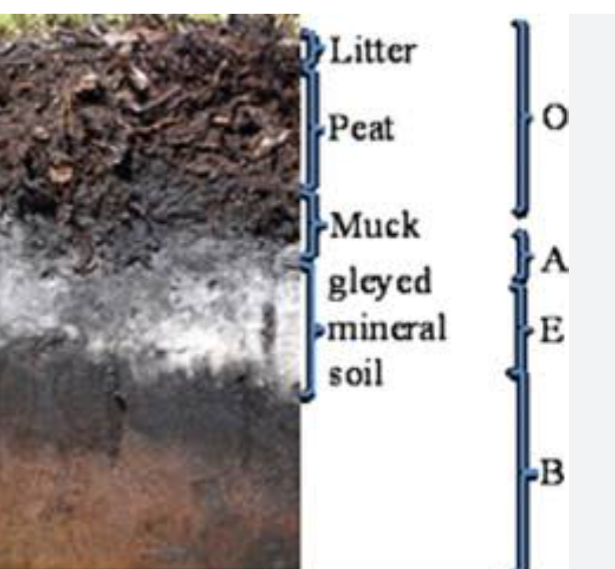
IMPORTANCE OF WETLANDS
1. Wetlands are economically important to people. They are popular places for recreational activities, such as hunting, hiking, canoeing, and bird-watching
2.Wetlands are home to pests like mosquitoes and animals like alligators.
3. Drained wetlands provided land for agriculture, housing, industry, schools, and hospitals
4. Many fish that depend on wetlands have become rare. Some of these species, such as flounder, trout, and bass, are commercially important.
5. Wetlands are used for off season crop production like vegetables.
6. Wetlands are used in growing hydrophytic plants like paddy rice.

WETLAND INDICATORS
1. WETLAND HYDROLOGICAL INDICATOR
Hydrology is the science of water, it’s properties, distribution and circulation, both on the surface and underground. The sources of water can be from direct precipitation, headwaterflood, backwater flooding, tides, ground water, and their combinations. Hydrology is influenced by various factors such as precipitation, stratigraphy, topography, soil texture, and plant cover.
Wetland hydrology refers to the timing and extent of flooding or soil saturation and is considered to be the “driving force” in wetland formation. Rainfall, soil permeability, position in the landscape, surrounding land use, and type of vegetation all influence the hydrology of a wetland.
PROPERTIES OF WETLAND HYDROLOGY
1. Wetlands moderate hydrologic variability, 2. Wetlands store flood flows
3. Wetlands reduce flow velocities during wet weather,
4. Wetlands release water slowly during dry weather.
5. Wetlands water storage capacity is related to the ability of wetlands to trap nutrients and sediments.
TYPES OF WETLAND HYDROLOGY
a. Subtidal : Tidal water permanently covers the land surface.
b. Irregularly Exposed : Tidal water usually covers the land surface, but is not exposed daily. c. Regularly Flooded :Tidal water alternately covers and daily exposes the land surface. d. Irregularly Flooded – Tidal water cover the land surface less often than daily
CATEGORIES OF WETLAND HYDROLOGY
Wetland hydrology indicators are divided into two categories:
i. Primary wetland hydrology :provide stand-alone evidence of a current or recent hydrologic event; and
ii. Secondary wetland hydrology : provide evidence of recent hydrology when supported by one or more other hydrology indicators.
2. WETLAND VEGETATION
Wetland plants are hydrophytes (hydro = water, phyte = plant). Wetland plants, or hydrophytic “water loving” vegetation, are those plants which have adapted to growing in the low-oxygen (anaerobic) conditions associated with prolonged saturation or flooding. These plants have adapted to anaerobic soil conditions by developing alternative methods of collecting oxygen such as the hypertrophied lenticels in the bark of speckled alder; the hollow stems of rush and grass species; and the air filled cells (aerenchyma) in the roots of cattails. Apart from this, these Hydrophytes have other morphological, physiological and reproductive adaptative structures that allow them to thrive in inundated or saturated soils where non-hydrophytes (upland plants) cannot survive. Such adaptative structures include: elongated stems, shallow roots, and adventitious roots (which are special roots that sprout off their underwater stems to help the plants take in water, oxygen, and nutrients. Examples of such wetland plants include duckweed, water lily, pickerel weed, cattails, wooly sedge, soft-stem bulrush, royal fern, and water horsetail etc.
These plants indicators have created a fundamental difference between the different types of wetlands and their functions
3. WETLAND SOILS
Wetland soils are unique and they occur at the interface between aquatic and terrestrial ecosystems. They are usually saturated in almost or through out the year. They are poorly drained with characteristic dark or grey colouration. Due to it being saturated with water, the soil environment is under anaerobic condition, thus, resulting in slow decomposition of the huge organic residues deposited in them. These soils are poorly fertile. When the pool of water dries up, aerobic condition occurs within the environment. In the saturated soils, oxygen typically does not diffuse more than a few millimeters below the water table and reduced compounds and trace gases (N2O, H2S, CH4) produced from anaerobic metabolic pathways which accumulate at high concentrations. The Micronutrients in Wetland soils are determined by several interacting factors such as pH, exchangeable acidity, organic matter content, clay contents, salinity, the quality as well as the biochemistry of the wetland soils.
The pH of wetland soils is much smaller compared to upland softs. The pH of natural wetland softs generally ranges from around 6.5 to 7.5 with a few exceptions. These wetland softs favors metal immobilization. Carbon is stored within the wetland plant communities and soil instead of releasing it to the atmosphere as carbon dioxide. Hence, wetlands help to moderate global climate conditions.
In addition, Intertidal wetland soils are potential sources of greenhouse gases (GHG), including carbon dioxide (CO2), methane (CH4), and nitrous oxide (N2O). The anthropogenic activities on the wetlands influence the quantities and patterns of the GHG emissions from wetland soils through changing the environmental settings and substrates regulating the productions of the GHGs. The anthropogenic activities result in: tidal restriction, deforestation, and soil nutrient enrichment etc. The responses of GHG emissions from wetlands is dependent on the species of gases and the anthropogenic activity.
The wetland soils only support the growth and regeneration of vegetation that has adapted to grow in saturated/inundated and low-oxygen conditions.
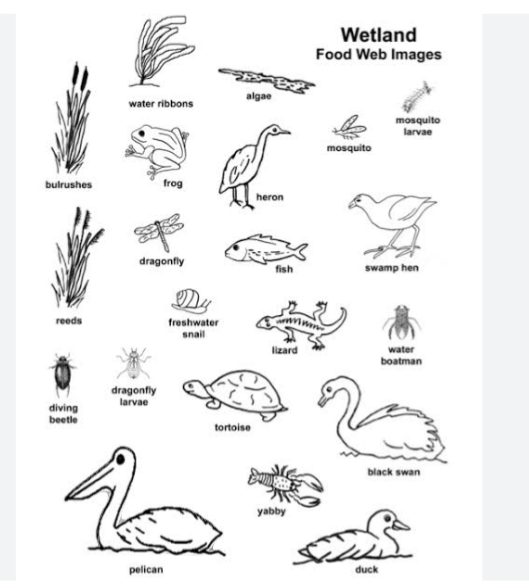
CLASSIFICATION OF WETLAND SOILS
Generally, wetland soils can be classified into three categories:
1. Soils permanently inundated with water above the soil surface
2. Saturated soils with the water table at or just below the soil surface
3. Soils where the water table depth is always below the surface
These can be used as indicators for assessing and identification of the wetlands
CHARACTERISTICS OF WETLAND SOILS
The characteristics of Wetland soil minerals depend on their past histories and on the period through which they develop above the water table. Soil organic matter is also an important tool for the characterization of wetland soils. It is the substrate for anaerobic microbial activity that result in oxygen depletion and characteristics change in redox potential, pH and nutrients availability. Huge organic residues from plants are deposited in the wetland environment. They decompose slowly, and often stay very dark in colour (black). Otherwise, the soil is hydric, with a dull grey colour. These soils can often have spots of red, orange, blue, or green. All these occur in the low lying areas that do not drain well.
Wetlands can be flooded or saturated through out the year, reason for their anaerobic condition. They only support the growth of hydrophytic plants and some aquatic animals and terrestrial animals
Wetlands have one or more of the following three attributes:
1) at least periodically, the land supports predominantly hydrophytes
2) the substrate is predominantly undrained hydric soil; and
3) the substrate is saturated with water or covered by shallow water at some time during the growing season of each year.
WETLAND ASSESSMENT
Indicators are used for wetland monitoring and assessment. Many of the characteristics and processes of wetlands are indicators of wetland functions. These wetlands differs and perform different functions from one another, hence, different indicators are used for assessing the different types of wetlands.
When these indicators are identified, the following can be determined:
1. the status of specific wetland functions,
2. changes in functions over time, and
3. allows comparison of functions between similar wetland types.
There are three indicators of wetland. They include: vegetation, soil, and hydrology.
CATEGORIES OF WETLANDS
Wetlands is characterized by flooding and soil saturation. It’s variability is due to various factors which include: regional and local differences in soils, topography, climate, hydrology, water chemistry, vegetation, human disturbance and other factors etc .
There are two categories of wetlands. They include:
a. coastal or tidal wetlands and
b. inland or non-tidal wetlands.
a. COASTAL /TIDAL WETLANDS
Coastal/tidal wetlands are found along the Atlantic, Pacific, Alaskan, Gulf coasts and in the United States,. They are similar to estuaries where sea water mixes with fresh water to form a saline water body. The salt water and the fluctuating water levels (due to tidal action) combine to create an enabling habitat for most plants and aquatic animals. These plants and aquatic animals have successfully developed adaptative features needed to survive in this environment. Such plants include certain hydrophytic grasses and grasslike plants, Mangrove swamps plants, and salt-loving shrubs or trees, are common in such wetland areas. Other varieties of plants found in wetlands including floating pond lilies, cattails, duckweed, cypress, tamarack, and blue spruce. Crabs, dragonflies, otters, alligators, mosquitos and osprey. Salt loving fishes, reptiles, Birds, including ducks, geese, kingfishers, and sandpipers and some other terrestrial animals that survive within these areas.
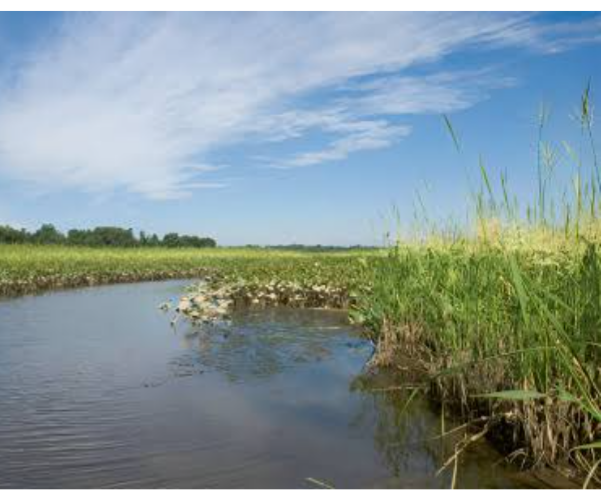
b. INLAND /NON-TIDAL WETLANDS
Inland/non-tidal wetlands are commonly found near floodplains along rivers and streams (riparian wetlands). They are usually located in isolated depressions surrounded by dry land like basins along the margins of lakes and ponds, and in other lowlands where the groundwater intercepts the soil surface or where precipitation sufficiently saturates the soil. Inland wetlands include marshes and wet meadows. Organisms dominating these areas include: herbaceous plants, swamp shrubs and trees. Also, aquatic animals are found at these regions of wetlands.
Example of these wetlands is vernal pools.
Fishes and shellfish, including shrimp, blue crab, oysters, salmon, trout, and seatrout are found in these wetlands.
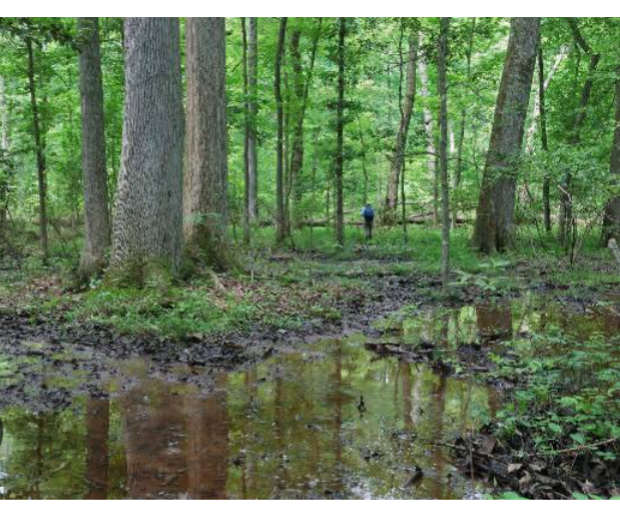
CLASSIFICATION OF WETLAND
Wetlands are natural or artificial, permanent or temporary water bodies that is static or flowing, with depth of which at low tide does not exceed six metres. Due to the flooding or saturation characteristics of wetland soil, the soil environment has low-oxygen that favour a specialized assemblage of plants, animals, and microbes habitating such environment. These organisms exhibit adaptative structures they use to tolerate the periods of sluggish movement or stagnant pool of water. Wetlands are usually classified according to soil and plant life that makes up the Wetland ecosystem. They occur as bogs, marshes, swamps, and other similar environments.
THE FADAMA
In countries like Nigeria, the FADAMA also a wetland, is a low lying swamp area consist of fluvial depisites and contain expensive exploitable aquifer. The word means seasonally flooded areas used for farming during the dry season. FADAMA are regarded as very rich agricultural areas and contain land and resources that could easily be developed for irrigation agriculture. The FADAMA is characterised by surface and shallow ground water source. The soil usually have low gradients and are liable to seasonal flooding at the peak of rainy seasons. The FADAMA soils vary widely in morphological and chemical characteristics both within and between valleys owing to differences in morphogenesis, location, hydrological regions, lithologic origins and climatic conditions. Therefore, they could be very poor in fertility, slow drainage area with fine texture.
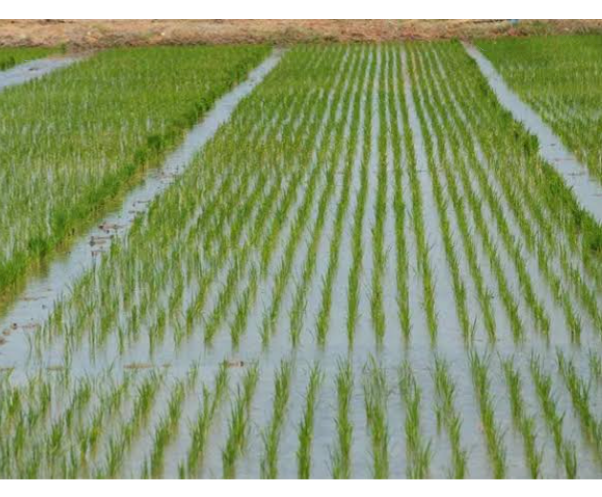
CHALLENGES OF WETLANDS
Wetlands also have it’s challenges. Some problems of the wetland soils are salinity, high sodium content, low pH, and poor physical properties
